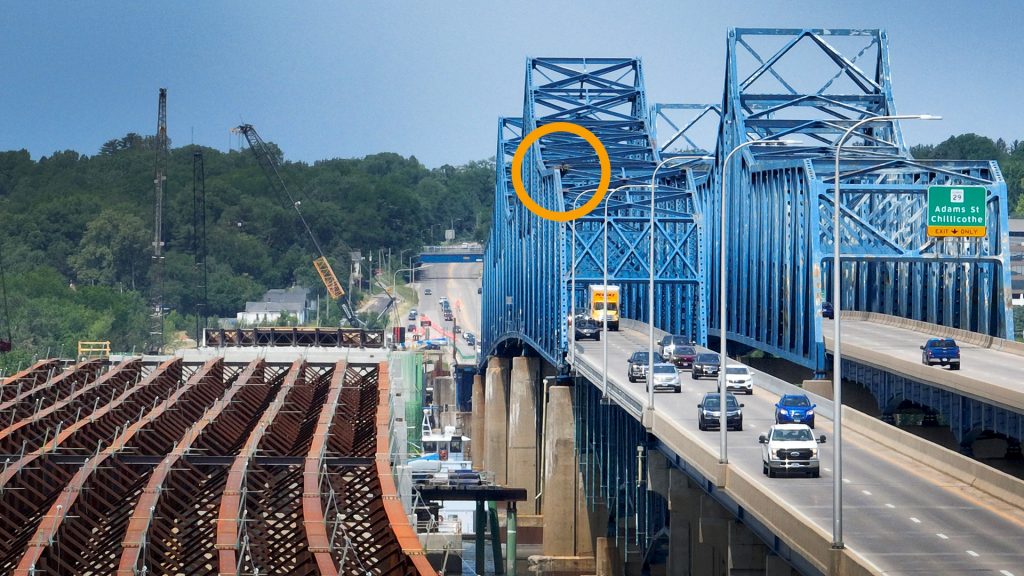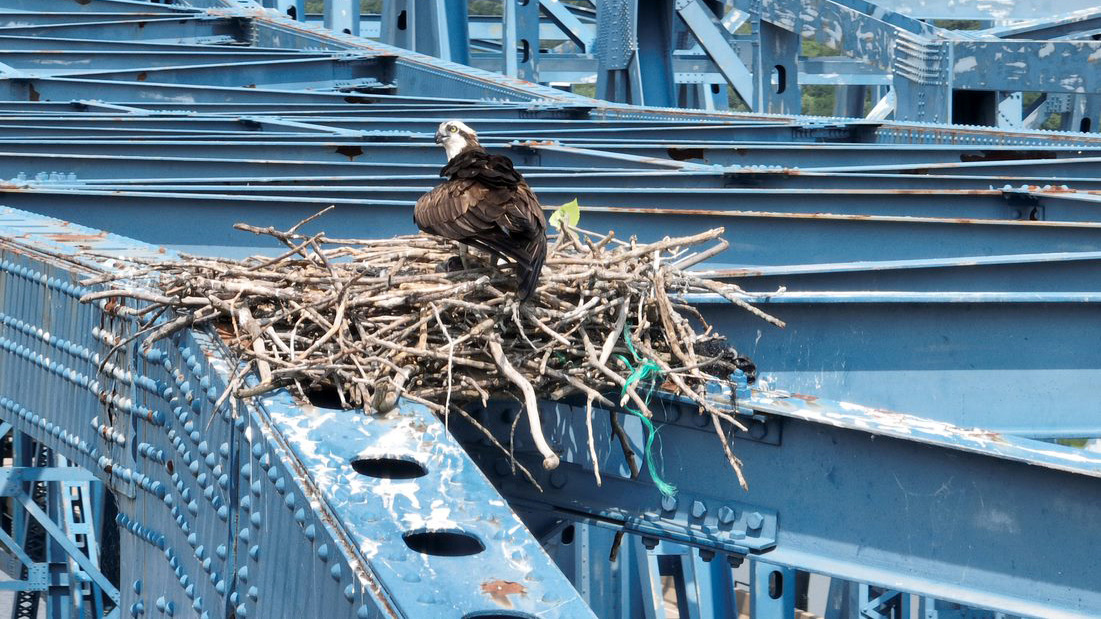The McClugage Bridge ospreys have nested at the same spot for five straight years, but they’ll soon need a new bridge … er, home
In a year, I might lose two friends.
Then again, maybe they’ll stick around.
It’s hard to tell. They’re flighty. And distant.
Also, they’re birds.
Ospreys, to be exact.
Maybe you know them as well. They might be the most visible birds in Peoria. For years, they’ve lived in a huge nest atop the McClugage Bridge.
But their days are numbered.
Next summer, after the completion of the new eastbound span of the bridge, the old one will vanish. When it goes, so will the nest.
Wither the ospreys? Good question.
It’s impossible to know their age. But the couple — ospreys mate for life — first appeared on the eastbound span of the bridge in the spring of 2019. That makes sense: osprey nesting season runs April to August.
The nest sits atop an easternmost vertical beam. So, you can best see it when headed west from Tazewell County into Peoria.

Why build a nest there, instead of in a tree? It’s hard to know what goes through a bird’s brain. But they’re fish-eating hawks. So, from that perch, they’ve got a nice menu swimming below.
Ospreys are as big as geese. So, they need roomy nests, which can stretch seven feet across and weigh 300 pounds. If you’re lucky when you pass by, you might spot one or both ospreys, their white heads bobbing just above the top of the nests.
But outside the nesting season, they rarely visit the nest. In warm months, they almost always roost someplace else, mostly in trees. In the winter, they migrate to Central America or South America.
And though they’re a couple, their extra-nest activities are mostly done solo. They might hang out from time to time, but they usually go their separate ways September through February. That’s just how they are. Maybe that’s what makes for a happy osprey union.
Perhaps the time apart gets them revved up for mating season. Each spring, regardless of where each bird has been since the previous August, they reunite at the same nest, hatching about two eggs per year. We don’t know how many little ospreys have sprung from the McClugage Bridge, but mama and daddy have been there for five nesting seasons.
Next year, they can share one more nesting season at the bridge. After that, they’ll have to find a new home.
Though the bridge project has been extended a couple of times, the Illinois Department of Transportation expects to open the new eastbound span in July of next year. Not long afterward, the old span will be dismantled. There’s no definite timetable there, but IDOT will wait until after the next nesting season ends in August 2024.
Ospreys are classified as an endangered species in Illinois. That’s not to say the ospreys are in trouble overall, as they’re plentiful in every continent except Antarctica. But they’ve nosedived in number in Illinois.
So, with the endangered-species designation, it’s illegal to intentionally harm, harass or kill ospreys. That’s why IDOT won’t dismantle the old span until after next year’s nesting season. By then, any baby ospreys will be gone. And the couple aren’t dumb enough to stay in the nest as the bridge comes tumbling down, said Joseph A. Kath, endangered species program manager for the Illinois Department of Natural Resources.
“When they’re disturbed, they’ll fly away,” Kath said.
The nest will plop into the water. So, in the spring of 2025, the ospreys will have to build a new home, perhaps not far from their current spot.
“They tend to return to the general vicinity year after year,” Kath said.
Ospeys can live to age 20. So, the couple might fly back to the same area for many more years.
Might they build a new nest on the new bridge? I hope so. They’ve become a familiar (and welcome) part of my daily travels. I’d like to see them build anew near their old spot.
“Anything is possible,” Kath said.





